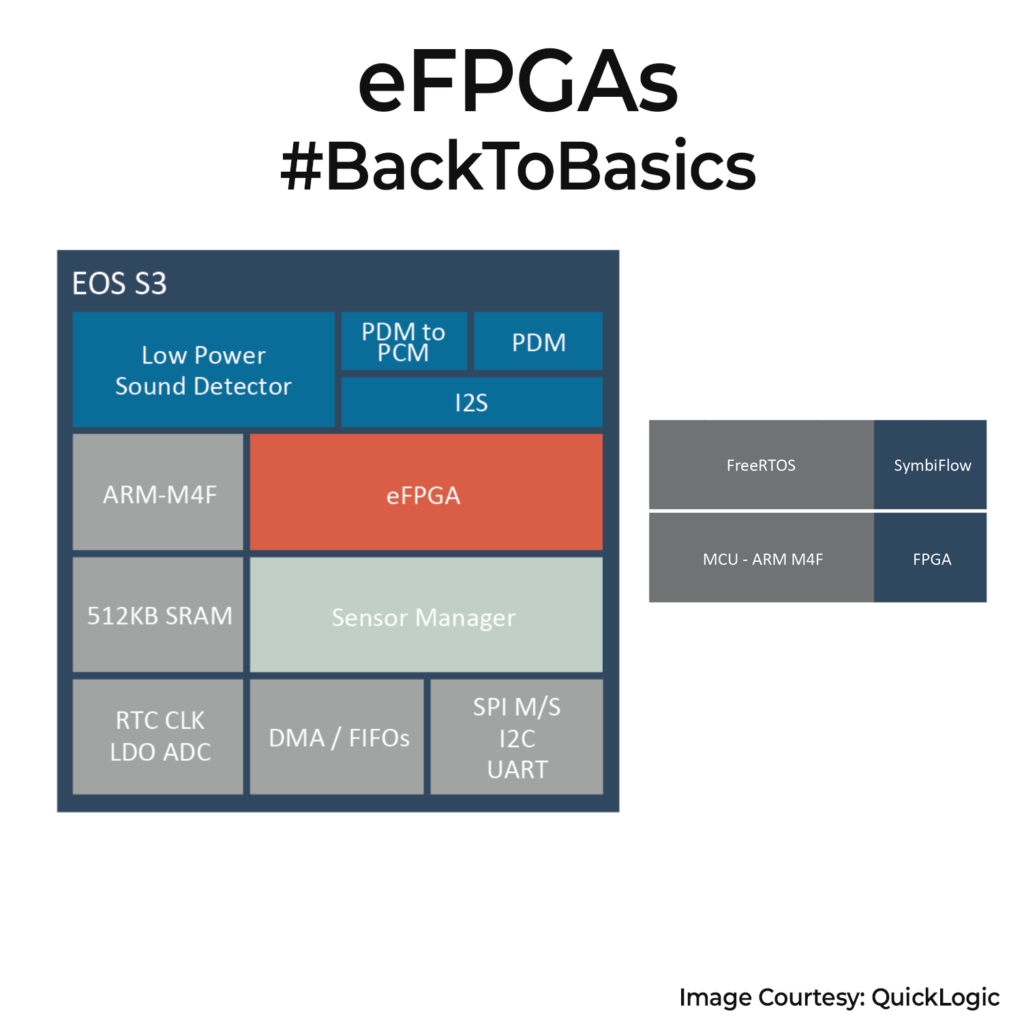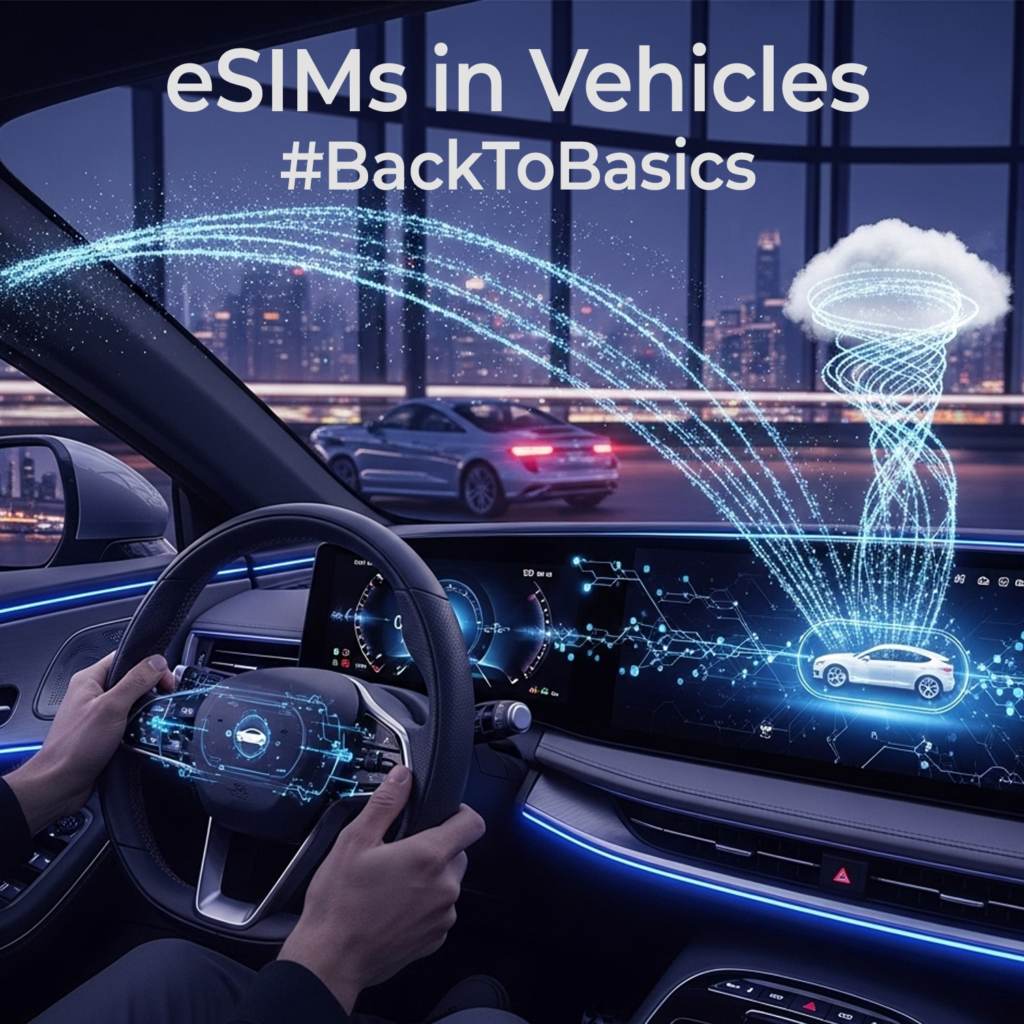I’ve been exploring a few SoCs for a new project, and I ran across QuickLogic’s QuickFeather board with the EOS S3. It has an Arm Cortex M4F processor with an embedded FPGA. That made me realize many folks would benefit from a quick explainer on what an embedded FPGA is. Here it goes.
An eFPGA is reconfigurable hardware inside the chip. Think LEGO you can rearrange. You load a bitstream from flash at boot, control it like any other peripheral, and it runs next to the CPU with very low delay. You can keep it internal for accelerators or route its signals to pins through the normal pinmux.

Why this helps you? It gives you hardware speed for the complex parts of your design that keep changing. Think custom sensor timing, packet parsing, digital filters, cryptography, or tiny ML components. You move those time-consuming parts into hardware, and you free up clock cycles on your main processor firmware. Since it’s in hardware, responses come in deterministic time, it makes firmware less messy. Think of it as a programmable coprocessor which you can change into anything. You use it when you need tight timing, or for features you plan to revise after launch or potentially upgrades to certain algorithm blocks. It also helps when you want to try new ideas in the field without a new chip spin without massively worrying about what it does to your firmware.
Please don’t use it for simple projects. Your normal MCU with firmware changes, as we have all done till now, will work. If you are planning on using it, please make sure you have a plan to update devices safely, as it will definitely be needed.
Need to buy a EOS S3 board to try these out in detail. Anyone with practical experience with these chips/boards? How were they?
